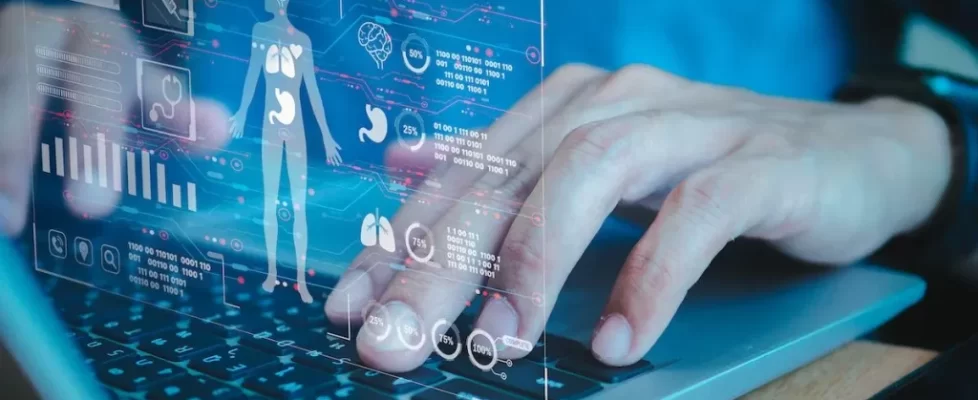FQHCs Must Get Creative with Building and Sustaining Remote Patient Monitoring Programs
Federally qualified health centers (FQHCs) are an important safety net for individuals who often do not have easy access to primary and preventive care. With a mission to ensure the delivery of high-quality, comprehensive health care services to these underserved communities, many FQHCs are now choosing to leverage technology – like remote patient monitoring (RPM) – to reach more individuals and take a proactive approach to their care that results in better outcomes and minimizes health care overall costs.
RPM’s role in improving access to care
Since the COVID-19 pandemic, incorporating RPM into a patient’s care has proven extremely effective for FQHCs. Services can be extended beyond traditional in-person visits, which is particularly important when monitoring patients for high blood pressure, diabetes, heart failure, asthma and other chronic conditions. The patient-generated data also enhances continuity of care, allowing clinicians to identify potential red flags before they escalate into more complicated problems. By having a holistic view of the patient and taking proactive measures, FQHCs can ultimately reduce overall health care costs for both the patients and payers.
Yet, despite the early successes with RPM deployments and the obvious benefits from the initial grant funding FQHCs received for RPM projects and specific disease management initiatives during the pandemic, FQHCs still face significant uncertainty about how to pay for these beneficial programs long term, as those grants are limited in scope and duration.
Overcoming current obstacles in RPM reimbursement
As the reimbursement currently stands, Medicare does not reimburse FQHCs or rural health centers (RHCs) for RPM activity. Additionally, Medicaid coverage varies greatly by state. Currently, 34 state Medicaid programs provide RPM reimbursements, but this coverage often does not include FQHCs. Many Medicaid programs also have restrictions – such as limiting the types of clinical conditions for which symptoms can be monitored, the devices used and the information that can be collected.
To keep RPM programs running, and potentially consider expanding their use, FQHCs have needed to find creative ways to pay for them. Among the approaches are:
- Incorporating into chronic care management (CCM) – CCM code G0511 is a Medicare service designed to support patients with multiple chronic conditions by providing non-face-to-face care coordination and management for those with substantial health care needs. Often patients who could benefit from RPM also have multiple comorbid chronic conditions. The revenue from CCM services for these patients could help sustain RPM programs.
- Generating additional in person visits according to medical necessity based on RPM data – The CMS Prospective Payment System (PPS) payment model reimburses FQHCs based on a predetermined, fixed rate per patient visit or encounter. The intent of PPS is to cover the costs of providing a comprehensive range of primary and preventive health care services so that FQHCs have a stable and predictable funding source to provide essential, appropriate health care services to their communities. In some cases, these payments can help support RPM programs. For example, TrueCare in San Diego indicated that PPS reimbursements will help sustain its current, successful RPM program for hypertension if engagement in the program results in one extra in-person visit for every 13 patients using RPM. These in-clinic visits are often needed to assess symptoms, complications or medication adjustments that are identified through the RPM program.
- Bolstering grant applications with data on patient outcome improvements – Grants play an important role in enabling FQHCs to support patients and employ state-of-the-art solutions. FQHCs with existing RPM programs should leverage the data they collect and track patient progress to show the positive impact of remote monitoring on patient outcomes. Real-world results and examples of successful deployments will strengthen the case for FQHCs to win grants to continue support, or enhance, RPM programs. For example, a large FQHC in California was able to build their RPM program through successive grants leveraging outcomes achieved. After their initial Hypertension grant from HRSA in 2021, the FQHC was able to secure an Optimizing Virtual Care (OVC) Grant in 2022, which allowed them to expand RPM to diabetes. When submitting for the OVC grant, they used the success of their hypertension pilot program.
New hope for Medicare reimbursements for RPM at FQHCs in 2024
While these efforts may help sustain existing programs, there are indications that changes are on the horizon to make RPM reimbursements more impactful. Changes to current reimbursement presented in the 2024 Proposed Physician Fee Schedule (PFS) would allow for reimbursements to FQHCs for RPM services for Medicare beneficiaries. While this does not dictate coverage for Medicaid beneficiaries, and there is some concern that billing for RPM under the same G0511 code as CCM will not provide enough sustainability for RPM activities, it’s a starting point. If Medicare does expand eligibility for RPM reimbursement to FQHCs, it is anticipated that many Medicaid plans may follow suit. This would create a sustainable model for RPM programs at FQHCs and provide needed support to many individuals who receive their care through these community health clinics. Many stakeholders provided robust feedback to CMS’s proposed PFS and anxiously await the 2024 PFS Final Rule in early November.

